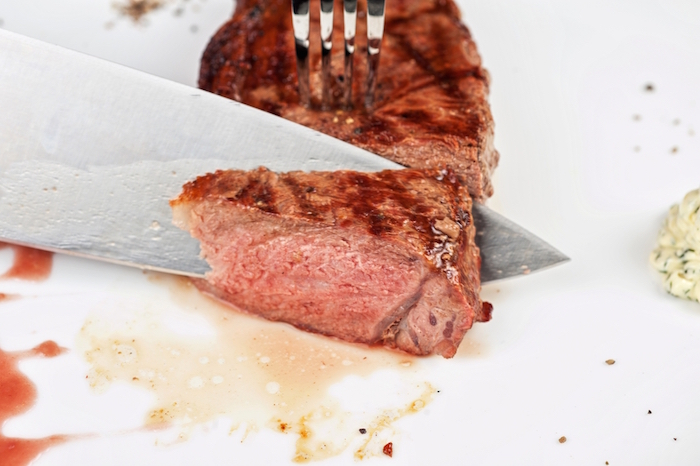Beef Cuts 101 – Your Guide to the Basics of Beef
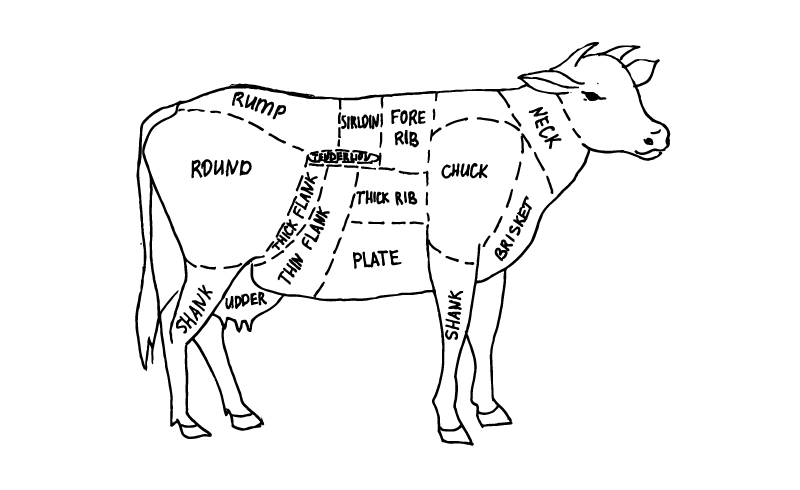
Do you know your shank from your flank? Your rump from your round? Your sirloin from you tenderloin? If not, Beef 101 is for you. Every cut of grass fed beef has a distinctive flavour and texture. This post will help you to recognise the different cuts and give you some ideas about how to cook them in a manner that will best bring out their flavour and perfect their texture.
Stay tuned for our next 101 posts on pork and chicken and check out our lamb 101 post if you missed it. You’ll be a meat-mastermind in no time.
Neck
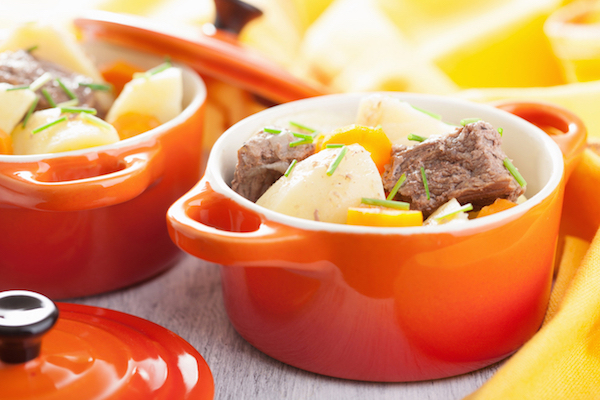
Neck meat isn’t the most tender cut, as the cow’s neck muscles are constantly moving and working. As such, neck is an affordable cut; however, this doesn’t mean that it is low quality or that it won’t taste delicious when cooked right. Neck meat has a substantial amount of fat amongst the meat, and this makes it ideal for slow-cooking. When neck meat is cooked slowly on a low heat the meat is tenderised and produces a rich and succulent flavour.
Cooking methods?
Neck meat is best suited to ‘low and slow’ (as opposed to ‘fast and furious’) cooking methods, as this will tenderise the meat and bring out its flavours. Braising is a great cooking method for neck meat – when neck is cooked slowly over several hours the tissue is broken down and this renders the meat fall-apart tender. Neck tastes delicious in casseroles, stews, soups and curries.
Brisket
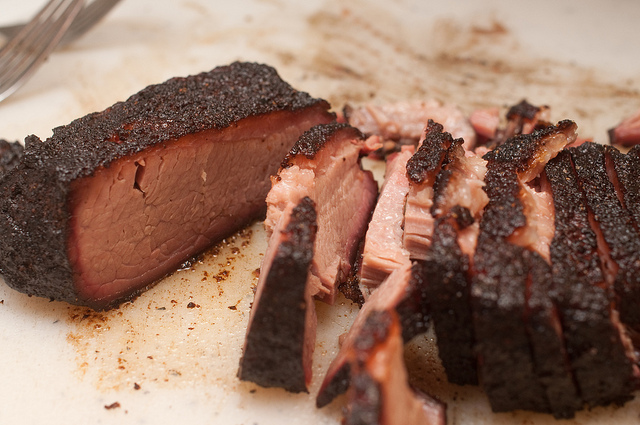
- Image from Flickr creative commons user Ernesto Andrade
Beef brisket is a Texas favourite. This large and flavoursome cut is often cured or smoked and is also one of the best cuts for braising and slow cooking. Brisket is also the traditional cut used for corned beef. Brisket meat is delicious but somewhat tough, so it tastes best when cooked slowly as this tenderises the meat.
Cooking methods?
Brisket can be cooked many ways. The tough meat can be counteracted with long and slow cooking, which allows the connective tissue to break down and ‘gelatinise’ into a rich and tender meat. Cooking methods can include braising, stewing, smoking, BBQing or roasting (make sure to baste generously when not cooking in a liquid).
Brisket is a great make-ahead dish as it actually tastes better the next day – sitting overnight allows the meat to develop its delicious flavour and texture. Brisket is a great choice for pot roasts, casseroles and smoky BBQ dishes.
Chuck
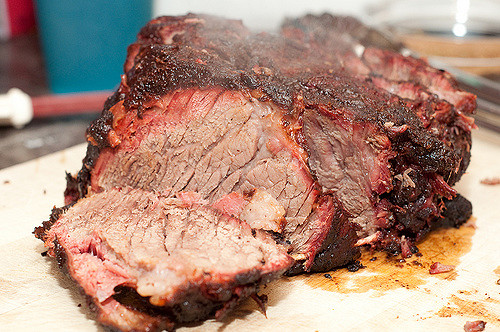
- Image from Flickr creative commons user rprata
Chuck is one of the most economical yet flavoursome cuts of beef. Chuck meat is fatty and made up of interconnecting muscles, which means it can be tough if not cooked properly. Chuck is ideal for low and slow cooking methods and tastes best when cooked slowly in a liquid.
Cooking methods?
The challenge with chuck meat is to soften the tough meat so that you can enjoy the delicious flavour. Chuck steaks are often marinated before being cooked, as this helps to soften the meat. Broiling, braising, slow cooking, stewing and grilling are favoured methods for cooking chuck meat. This cut is also one of the most popular for making ground beef, so chuck is often used in meatballs and burgers.
Ribs
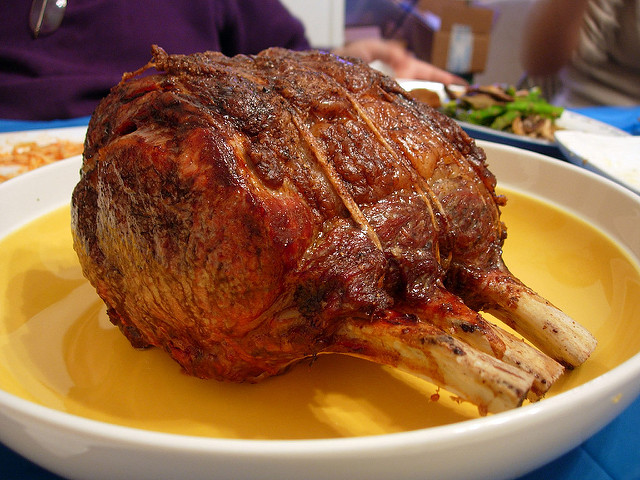
- Image from Flickr creative commons user wEnDy
Various different cuts can be taken from the ‘rib’ section of the cow.
Rib Eye:
Rib eye is one of the richest, ‘beefiest’ and most tender cuts available. Rib Eye’s marbling of fat makes it ideal for slow roasting or grilling.
Thick Ribs:
Thick ribs (or ‘short’ ribs) are meaty and need to be cooked slowly on a low heat to reach their full potential. If cooked properly, you will have succulent tasty slabs of meat held together by the chunky rib bones. The meat will easily pull off the bone and melt in your mouth.
Fore Ribs:
Fore ribs have equally delicious flavour to thick ribs ribs, but have less meat on the bone. Fore Ribs require low and slow cooking to break down their connective tissue.
Cooking methods?
Rib Eye Fillet:
Grill, BBQ, roast, pan-fry, broil.
Ribs:
Unlike pork ribs, beef ribs have less fat than pork. While the fat in pork ribs act as a basting method, beef ribs will need more of your attention in order to keep them moist and tender.
Most rib cuts will need a slow and low cook to break down the connective tissue that holds the meat to the bone. Holding the meat at a lower temperature for a long time is the key. Braising is a great method as the constant contact with liquid at a higher temperature encourages the metamorphosis of collagen tissue into gelatin, which adds flavour and moisture to the muscle. Other cooking methods include pressure cooking, steaming, roasting, smoking and BBQing.
Short Loin
The beef short loin is all about steaks – it’s quite likely that your favourite steak comes from this cut (short loin steaks include filet mignon, tenderloin, New York, Porterhouse and T-Bone). Steaks from the short loin are considered premium quality thanks to their tenderness – this area of the cow doesn’t get much exercise, and this renders the meat tender, flavoursome and juicy.
When choosing a cut from the short loin, it is important to ascertain whether the cut is from the front or the back part of the short loin, because cuts taken from the back part are often less tender due to their closeness to the legs (which are exercised constantly and therefore produce tough meat).
Cooking methods?
Steaks from the short loin are best prepared using dry heat methods such as grilling, BBQing, roasting or pan-frying. Short loin meat tastes great in steaks, kebabs and stir-fries. Because of the delicious flavour of this cut, it is often best to do as little as possible with the meat.
Short Plate
Short plate is an affordable cut of meat that can be tough if cooked incorrectly. Short plate meat has a high fat content, which makes it ideal for low and slow cooking. Plate meat is characterised by its rich flavour and produces steaks including the ‘skirt’ steak and the ‘hanger’ steak.
Cooking methods?
Meat from the short plate is best cooked low and slow. Short plate makes for great stew meat, because stewing releases the rich and beefy flavour of the cut. The challenge with the short plate is to maximise all of the flavour from the high fat content but minimise the tough texture. Braising is a fantastic choice for cooking beef plate, as this softens the meat and allows the fat to flavour the entire dish. Marinating and then pan frying the meat is also quite common. Meat from the beef plate is often used in ground beef and pastrami.
Sirloin
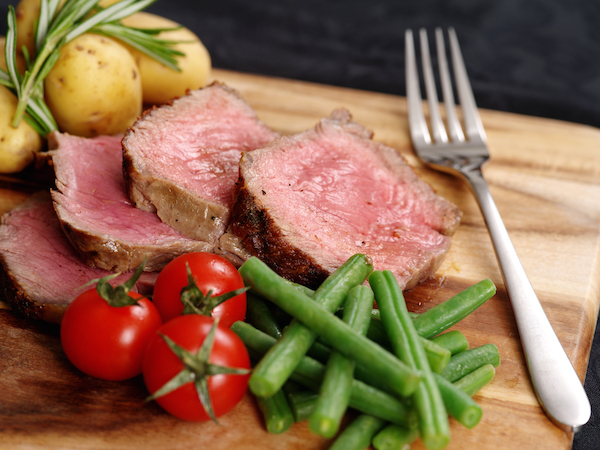
Sirloin meat is very flavoursome and has a deep and beefy taste. The sirloin is relatively tender, although not as tender as that of the short loin or the tenderloin. The sirloin comprises several different muscles of the pelvic area, and each of these different muscles has a different flavour and tenderness. There are two main parts of the sirloin – the top and the bottom.
The upper portion of the sirloin (closest to the loin physically) is more supple and tender that the bottom portion, which contains several muscles with varying degrees of tenderness. Most butchers like to use the bottom sirloin for ground meat, or cut it into chunks for stewing or braising.
Cooking methods?
Tender top sirloin tastes great when roasted or cut into steaks for frying, grilling or broiling. Although bottom sirloin cuts aren’t particularly well suited for use as a grill steak, they make excellent roasts, stew meats or bistro steaks (which are grilled or broiled whole and then thinly sliced into strips).
Tenderloin

- Image from Flickr creative commons user Josiah Lau Photography
The tenderloin, as you may have guessed from the name, is one of the most tender beef cuts. Tenderloin is also very lean, which makes it ideal for those who love steak but want to limit their fat intake.Tenderloin is long and oblong, and tapers from a thick end to a thin end. The three main parts of the tenderloin include the ‘butt’ (the thick end), the ‘center cut’ (the middle), and the ‘tail’ (the thinnest end).
Cooking methods?
Tenderloin is a versatile cut of meat and can be grilled, broiled, sauteed or roasted. Tenderloin tastes especially delicious when seared before roasting as this locks in taste and guarantees delicious flavour.
Flank
Flank meat is lean and flavoursome, but can be tough if not cooked in ideal conditions. Flank is characterised by its grain, which features long, string-like fibres running through the steak.
Cooking methods?
Flank is well suited to slow, moist-heat cookery such as braising, as this helps to break down the tough connective tissues between the muscle fibres. When cooked low and slow, flank meat is tender and moist.
Dry heat cooking methods (such as grilling) can be used as well, but it’s important not to overcook the meat. The trick to grilling delicious flank meat is to marinate it first and then grill it over a very hot grill for a short amount of time. After letting the meat rest for a few minutes, carve it against the grain (look at the meat to determine the direction of the grain (the muscle fibres) and then cut across the grain, not with it). When cut with the grain, flank meat will be tough and chewy to eat.
Rump
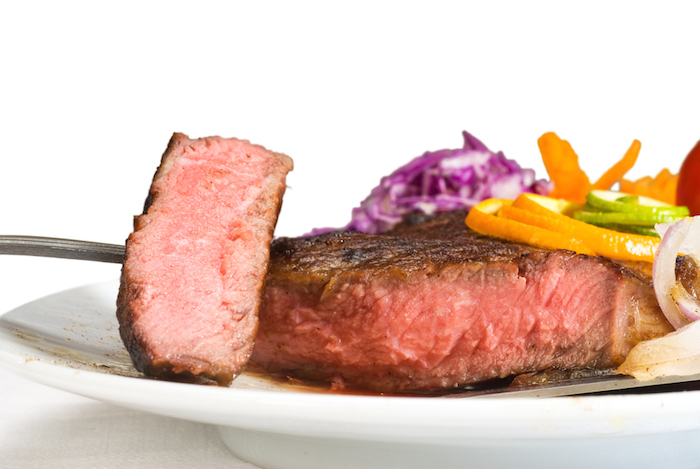
Rump is regarded as the ‘steak lover’s steak’ due to its full flavour and large portion size. Rump is a lean, tender and versatile cut that suits a range of cooking methods.
Cooking methods?
Rump tastes delicious when roasted, pan-fried, BBQ’d, stir-fried or even slow-cooked or braised in a casserole. Rump steaks are delicious and a guaranteed crowd pleaser.
Round
The muscles in the round are well exercised, so these cuts are lean but can be tough if not cooked appropriately. Round cuts are well suited to moist-heat cookery, and can also be roasted as long as the meat isn’t overcooked.
Cooking methods?
Round tastes delicious when slow cooked (in casseroles, soups and stews), pan-fried, grilled or roasted. Make sure to tenderise the meat (by using a mallet or the butt of a butcher knife) before frying or grilling, as this will make the meat cook faster and taste better. Round meat can become dry when cooked with dry heat methods, so moist heat cookery may the safer option when it comes to tenderness and flavour.
Shank
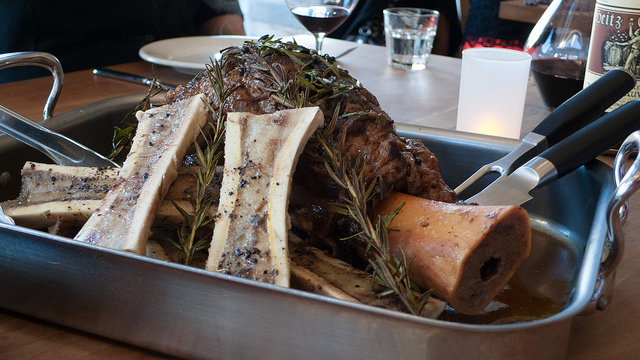
- Image from Flickr creative commons user Ernesto Andrade
Beef shank can be tough due to the constant use of this muscle by the animal. As a result, shank should be cooked slowly in moist heat to bring out its flavour and tenderness. Although shank is tough, it can be slow cooked to fall-apart tenderness. When cooked with the bone in, shank adds delicious hearty flavour to soups and casseroles.
Cooking methods?
Shank is most delicious when slow cooked, braised or stewed. Shank doesn’t often feature as the main ingredient in recipes, and is instead used as an essential component for bringing flavour to soups and stocks.
And that brings us to the end of Beef 101. Phew!
Which cut of beef are you going to master first? We have a wide range of beef cuts available from our online butcher store. We also have some great recipes if you need a little cooking inspiration.
Don’t hesitate to contact us for more information about beef cuts and the best ways to cook them or visit our store for the best grass-fed beef Brisbane.
Stay tuned for our next 101 posts!

